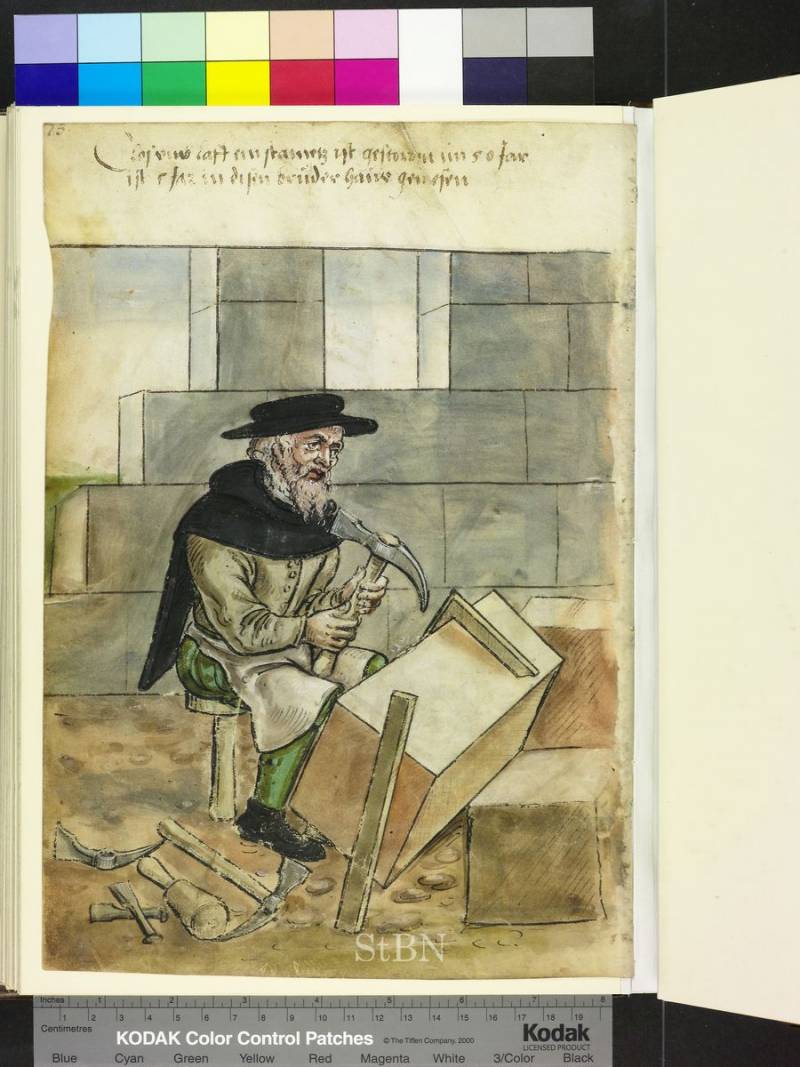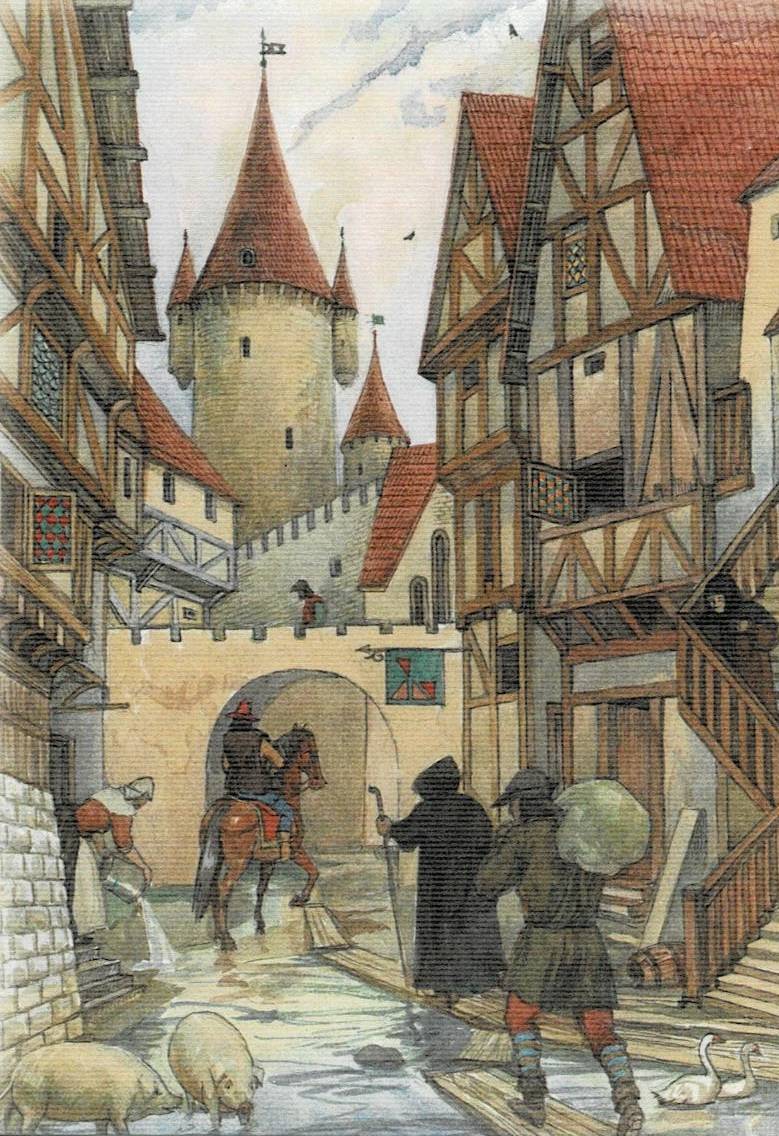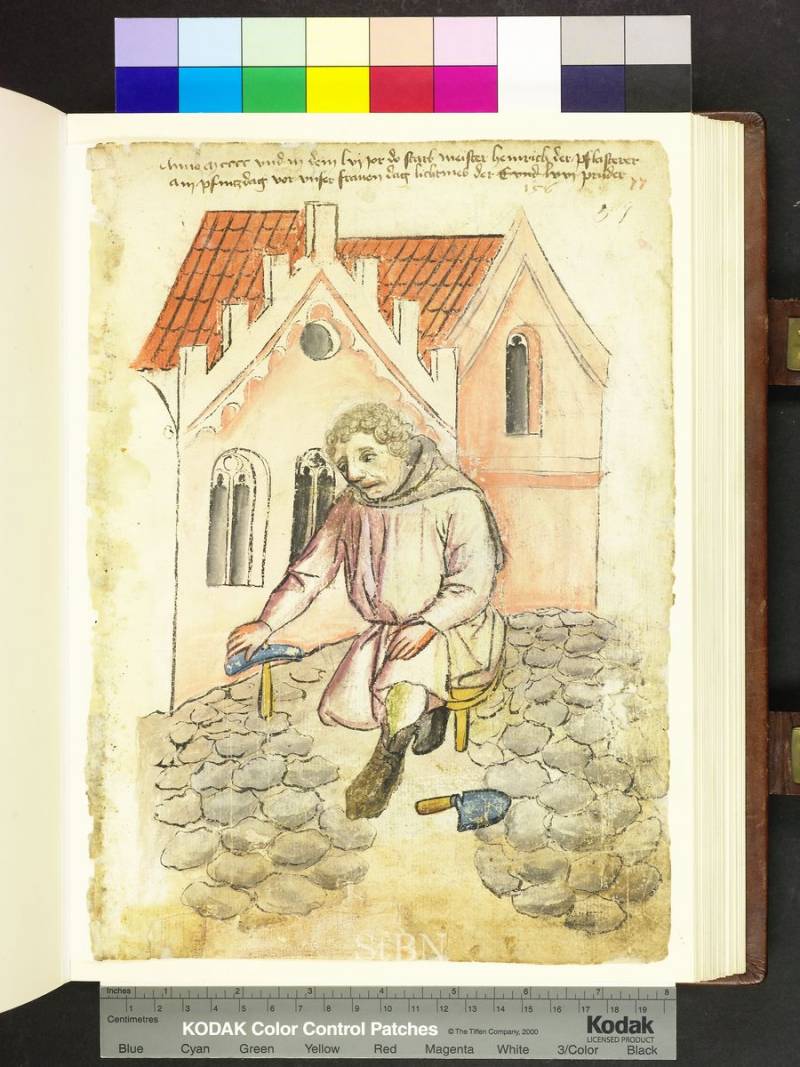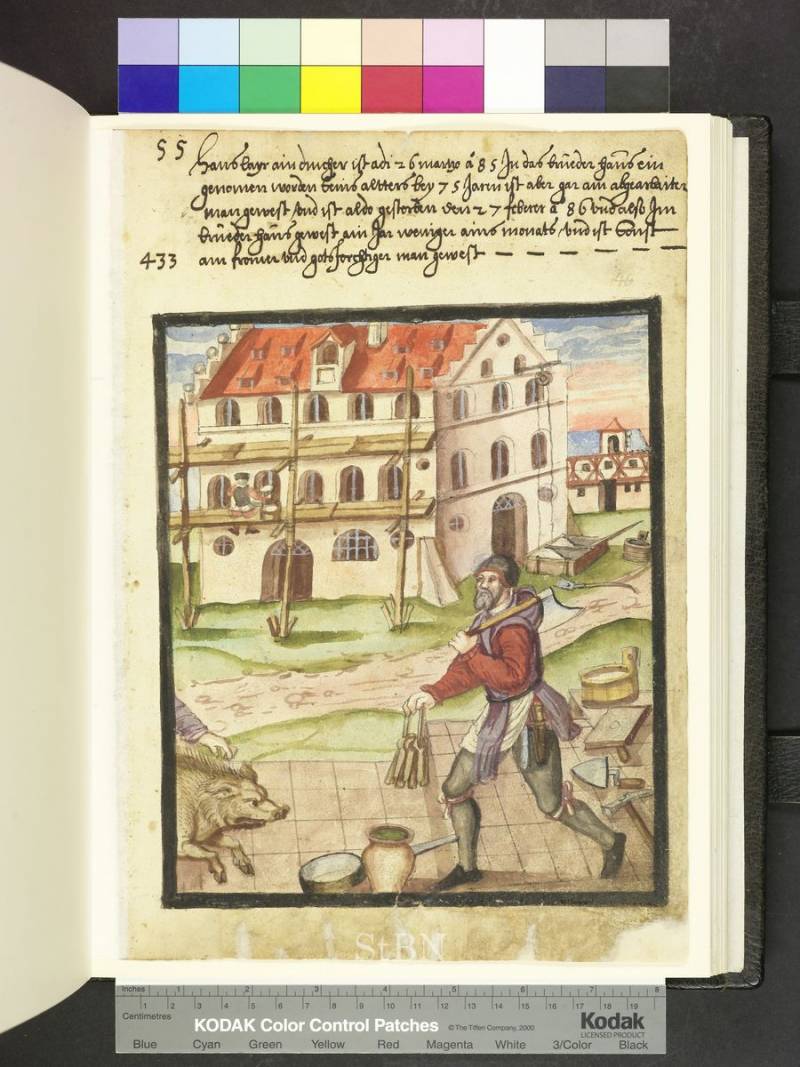Stone Middle Ages: the beginning of change

Rose in the Sainte-Nazaire Cathedral in Carcassonne. Author's photo
twists and turns and times.
Wisdom of Solomon 7:18
stories by stories Middle Ages. Today we continue the story about the professions of the Middle Ages related to construction and reflected in the illustrations of the Book of the Twelve Brothers. Well, it will probably be necessary to start with a reminder that manual labor in the construction of castles and cathedrals, firstly, required a large number of workers, and secondly, great knowledge from architects, which was supposed to be kept secret. It was not customary to advertise their names either.
Only in the 1211th century did the first evidence of the names of their builders appear. An inscription in the Reims Cathedral says that its construction was begun in 11 by Jean of Orbe, and continued by Jean and Gaucher of Reims, while a certain Bernard of Soissons worked on its facade with a rose window. In Notre Dame Cathedral, you can find the inscription: "Master Jean of Chelles began this work on February 1258, XNUMX."
Medieval builders still did not know much and relied on experience and intuition where only mathematical calculation was needed. The construction of vaults was considered especially difficult, the secret of which was passed down from generation to generation. It was believed that a person on his own is not able to solve such a difficult task as laying a reliable vault. Behind the backs of successful builders, they said that they were friends with the devil himself.
In Lorraine, for example, a priest was excommunicated as a heretic on the grounds that he designed a wonderful bridge: something that an orthodox Christian was not capable of. In other German principalities, a dead dog or a rooster, or even a horse, was thrown into the finished building, if only to propitiate the "spirit of the place." Here, it turns out, how difficult and often risky was the work of a builder in the Middle Ages.
In Spain, for example, they said: for the construction of a good arched bridge, the evil one will certainly demand a sacrifice, and those who dare to cross it may die. Therefore, the Spaniards came up with a trick: they drove a black cat across the bridge, hoping that in this way they managed to deceive the evil spirits.
The cathedral was built by several hundred people at once. And it is clear that none of the builders worked for free. The lowest group were the laborers. These were peasants who were looking for work in the city, or runaway serfs. They dug a ditch, carried earth, stones and mortar.
The work of artisans was much higher valued: for example, members of the stonemasons workshop. Some of them selected stones and subjected them to primary processing, others carved stone blocks and were engaged in stone carving. The sculptors who decorated the entrances to the temple with patterns and statues of saints were especially valued. After all, then the gates to the temple symbolized the gates to the Kingdom of Heaven.
The masons also had their own shop. The scaffolding was high, it was very dangerous to climb on them and work at a height, as if laying out arches and vaults. The higher the walls of the cathedral grew, the more difficult and difficult was the work of the builders.
Often, in addition to the basic salary, masons received a bonus for laying the keystone - the last stone that closes the vault. It was a symbol of the longevity of the building, so the capstone of the Rouen Cathedral in 1233 was even carved with the inscription: "Durand completed me."
The carpenters also played an important role. They built scaffolding and built a huge construction farm out of wood, supporting a stone vault. The blacksmiths supplied the builders with tools, nails, staples, and the casters cast lead for stained-glass windows.
Roofers also performed a very important job, because the most beautiful building with a leaking roof is not worth much.

Roofer. Hymerand Mullner, member of the fraternity. In an illustration from The Book of the Twelve Brothers, he stands on a ladder and covers the roof with tiles. 1537 (Amb. 279.2° Folio 25 verso. Landauer I)
In the Middle Ages, builders laid out the roofs of castles and cathedrals from the so-called roofing slate - a special stone that easily split into layers, from which roof tiles were then hewn out. By the way, on the roofs of most of the towers of the Carcassonne fortress, the roofs are made of slate.
They could also cover the roof with tiles, but less wealthy homeowners, even in the city, were content with roofs made of reeds and straw, just like in village houses.
Roofs were covered with sheets of lead. It was a very strong and waterproof roof, but it required very strong wooden floors and walls to support them, and besides, it was also very expensive.

The most common types of medieval roofing: a - from slate, b - from ceramic tiles, c - from reeds and straw
The working day lasted almost 17 hours: on the other hand, there were more than 100 holidays a year on which no one worked! They didn't work on Sundays either. Therefore, other artisans worked on a single cathedral all their lives. The record for long-term construction was broken by the Cologne Cathedral, which was erected intermittently for 632 years!

Klaus, stonemason. In the illustration from the "Book of the Twelve Brothers" he is depicted with a pick in his hands, that is, since 1425, his main working tool has not changed at all in 125 years! The tools he uses lie on the floor, but the master determines the accuracy of the edges of the stone block using a wooden square. 1550 (Amb. 279.2° Folio 38 verso. Landauer I)
Time passed, the Middle Ages as such ended, but the tools of the stonemason remained the same, as, by the way, judging by the illustration, and the methods of work. However, if outwardly nothing seems to have changed in the work of a stonemason, the changes have actually taken place very large.
So, by the end of the Middle Ages, hewing stones became much more complicated and became truly sophisticated. The stone-cutter now without fail began to engrave his brand on the stone, the so-called "day laborer's brand", with the help of which it was possible to easily calculate his output and, therefore, determine his earnings. Other marks, the so-called "laying", began to show where and how to lay this or that hewn stone.
Note that the architecture of castles, as well as church buildings, each country had its own. Castle towers in France had mostly gabled roofs. The Spaniards, under the influence of the Muslim Moors, widely used decorative stone and brick decoration (for example, stone hemispheres on rounded towers).
And according to the architectural features of Italian castles, one could judge whether their owners recognized the power of the German emperor in Italy or not. This could be distinguished by the teeth on the wall: if one tooth was separated from the other by a part of the parapet with a groove, this means that the sympathy of the owner of the castle is on the side of the emperor.

Street of the medieval city. Drawing by contemporary artist
Walking along the dirty and narrow streets of medieval cities was not very convenient and pleasant. At first, carts of hay were simply thrown on them, so that people would trample it into the mud themselves. But the square in front of the town hall and the shopping malls were always paved with stone.
There was even a special specialty - a brukovka, who paved the streets with cobblestones. And this business was not at all simple, but consisted of a number of operations, which is why cobblestone pavements were quite expensive. They included: preparation of the base, sorting the cobblestone in height and width (in terms of); laying of cobblestone, crushing of voids, tamping, and finally, backfilling with sand and rolling.

Brukovschik Heinrich, a member of the fraternity. Depicted sitting on a stool in the middle of a still not fully paved street, he drives a cobblestone into the ground with a hammer handle, and the trowel lies to his right. In the background is a large house with a stepped gable. True, at that time far from all the streets of medieval cities were paved. But gradually the paved streets became more and more. 1456 (Amb. 317.2° Folio 77 recto. Mendel I)
However, the most important thing is that at the turn of the XV-XVI centuries. The old knightly castles were replaced by luxurious castles and palaces of the Renaissance. So, the owners of the Loches castle in the Loire Valley also built an impressive defense system around the donjon of their castle: they provided for watchtowers, drawbridges, and lattices. But the very appearance of the castle has changed a lot: people moved from the art of defending themselves to the art of living beautifully.

Hans, a member of the fraternity, painter and part-time pig slaughterer. In the illustration, we see him with a full set of tools: a trowel, a bucket for lime, a pickaxe, an ax, a set of measures for sausage. On the right, his assistant is holding a pig (only his hand is visible) destined for slaughter. That is, the slaughter of pigs was a completely permissible type of part-time work for the painters of that time, although this is not mentioned in the inscription under the illustration. But behind it is a house with scaffolding, a pulley and boxes of mortar in the background, as well as his friend, who does just that and whitewashes the wall. 1586 (Amb. 317b.2° Folio 46 recto. Mendel II)
Window openings are now increasingly decorated with ornaments and double bindings, and the windows themselves have become much wider. The rooms on the upper floors became smaller, and the doors acquired decorative arches. All rooms are now equipped with carved fireplaces with caps decorated with sculpture.
Gilding and paintings are applied to the ceiling beams, columns, doorways, and the walls are covered with large colorful carpets and bright tapestries, painted with frescoes depicting scenes of Holy Scripture, knightly tournaments and battles.
Life has changed rather slowly but surely...
Information